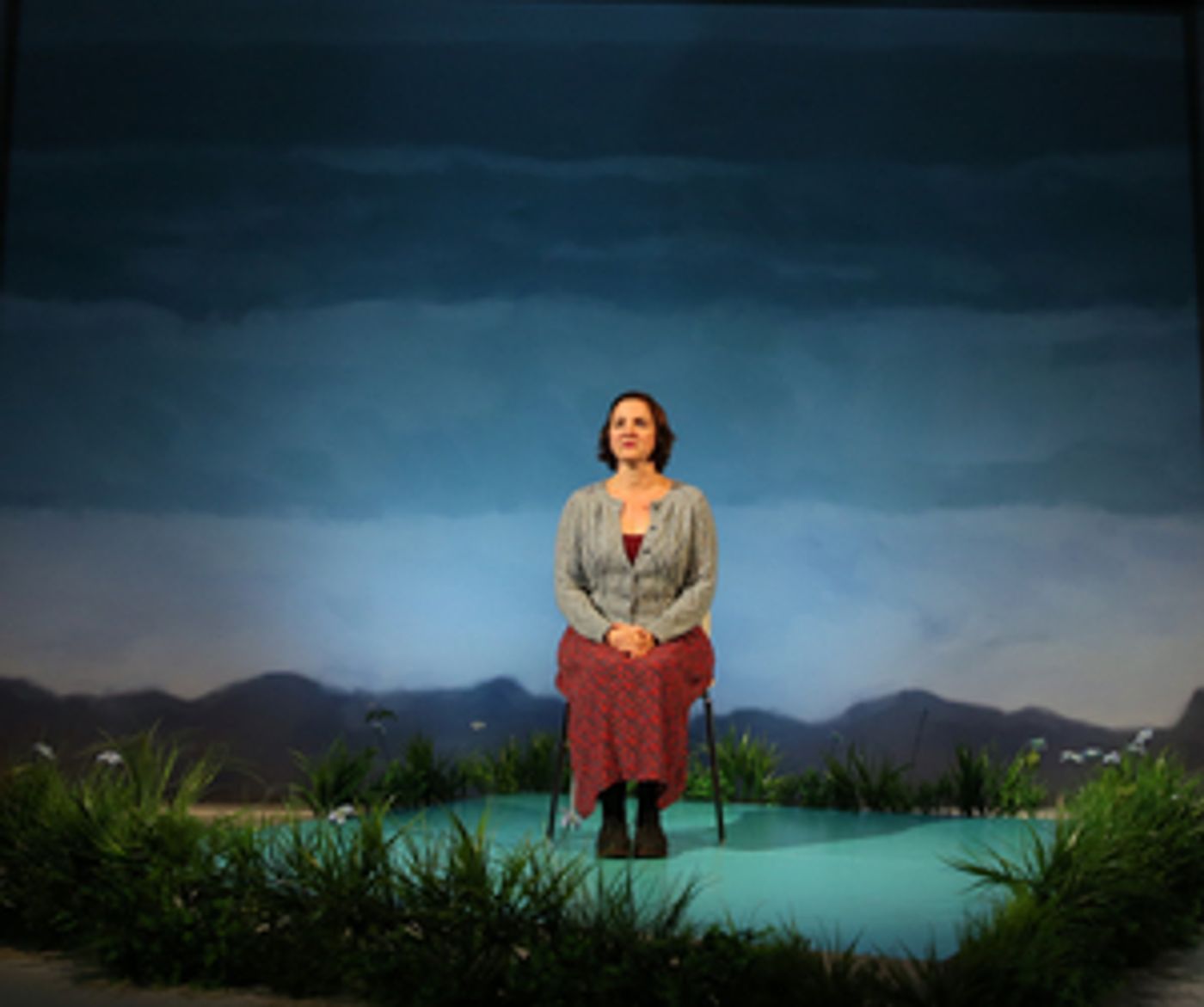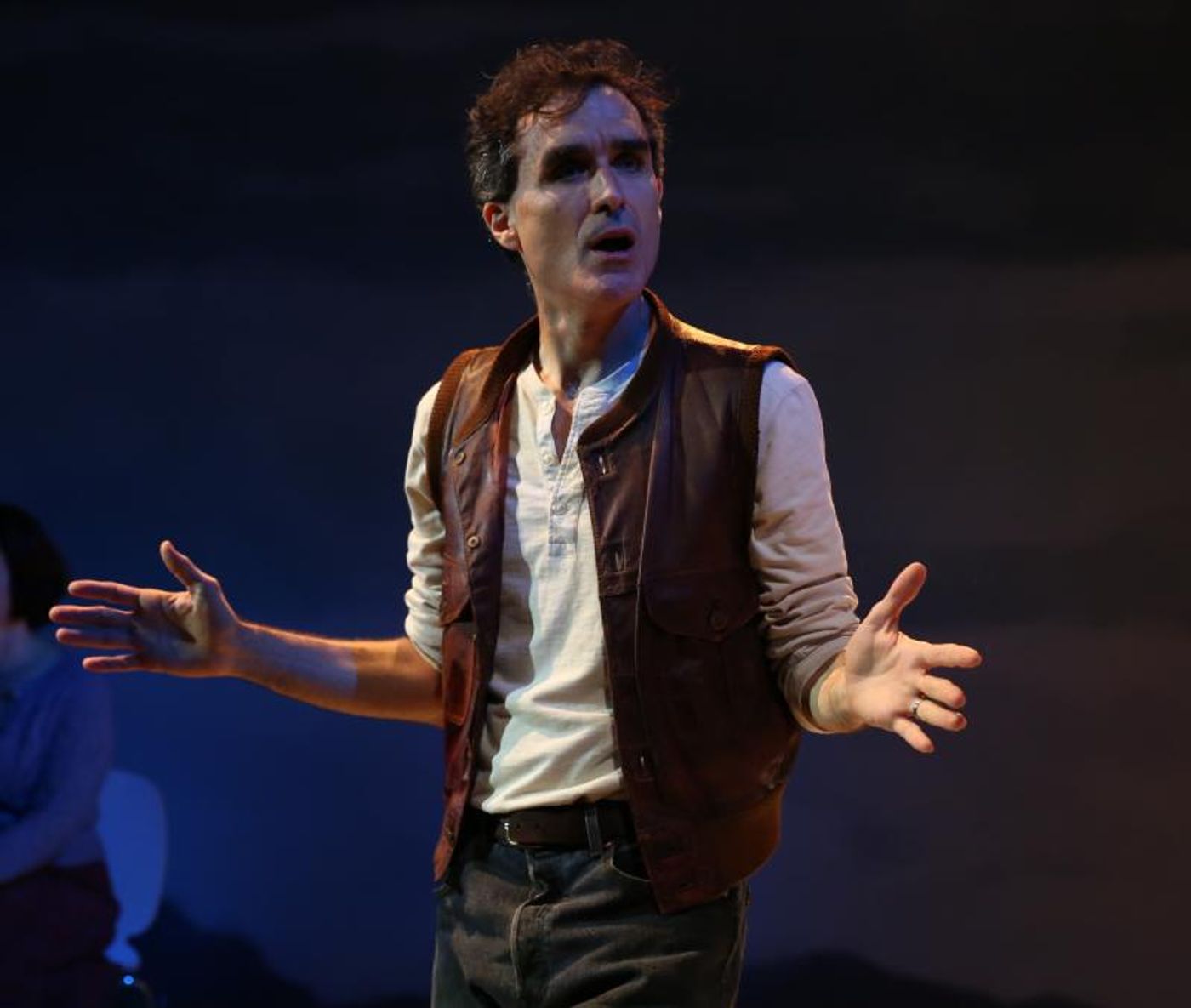Review: Keen Company's MOLLY SWEENEY at Theatre Row

"We do not see things as they are; we see things as we are."
This quote, attributed to Anaïs Nin, H.M. Tomlinson, and the Talmud (among others), echoes the evolution of the lead character in Keen Company's retelling of Brien Friel's emotional and penetrative two-act play, Molly Sweeney. The female blind protagonist of the same name lives an existence that is imagination-rich not only in her mind's eye ("I knew only my own world") but also in her personal relationships.
Set in contemporary Ballybeg, Ireland, the image-laden story of Molly Sweeney commands our attention as we listen closely to visualize what is being described to us from contrasting perspectives. In words and movement, the measured cadence of this economically directed nested narrative metes out minor revelations, each shedding a little more light on how agency and ambition create conflict in an ocularcentric society.
Written by renowned Irish dramatist Brien Friel and directed by Jonathan Silverstein (Keen Company Artistic Director), the play has a simple structure: monologues rotate between Molly (Pamela Sabaugh); her husband, Frank (Tommy Schrider); and Molly's surgeon, Mr. Rice (Paul O'Brien), who performs a procedure to remove cataracts from both of Molly's eyes and implant new lenses.

In a pre-LASIK era, the procedure Molly undergoes is as risky as it is rare, having been performed only a handful of times in 1000 years. Molly asks, "Why am I going for this operation? None of this is my choosing. Then why is this happening to me? I am being used. Of course I trust Frank. Of course I trust Mr. Rice. But how can they know what they are taking away from me? How do they know what they are offering me? They don't. They can't. And have I anything to gain? - anything? - anything?"
Frank and Rice are double trouble; each ignores (or at least paternally diminishes) Molly's identity, infantilizing her in the process. They think they know what's best for her, setting in motion some radical interventions that disrupt her status quo.

As director, Silverstein stays true to the playwright's note in the 1995 script to have each character inhabit his/her own acting area. Although this lack of blocking doesn't give the characters much to do in terms of interacting, the script's deluge of details provides plenty of backstories while grounding the conflict in the present.
The trio of performances draws us into the flow of the narrative and its part-and-pieces construction. Perhaps this is Friel's way of fueling the flow of Molly's world. Mr. Rice explains: "Molly's world isn't perceived instantly, comprehensively, she composes a world from a sequence of impressions; one after another, in time."
Blind since she was 10 months old, Molly could distinguish light from dark "but for all practical purposes," her doctor declares, "she had no useful sight." This raises a number of ethical questions: Who decides what is useful? What is practical? And should the semantics of what defines functionally blind vs. clinically blind make a difference to Molly--who dances, swims, works as a massage therapist, and leads an active social life?
The triangulation of the patient/husband/doctor dynamic shapes a conflict among three individuals with differing interpretations of what successful surgery means not only medically, but metaphysically. Although Molly is the one with a visual impairment, the men in her life suffer substantial emotional blind spots.
Throughout the play, Molly remains the center of attention while being denied autonomy. For most of her life, she lived in a world driven by imagination and her other senses. Post-surgery, her partially sighted world gives way to a new surreality checked by heightened awareness, ongoing scrutiny, and reframed memory. Sabaugh, a longtime member of Theatre Breaking Through Barriers, carries the show as she navigates the relationships (daughter, wife, patient, friend, and unwitting case study) that provide context for Molly's upstream swim to reclaim her identity.
Steven Kemp (Scenic Design) and Anshuman Bhatia (Lighting Design) create a subdued tableau from which Molly's story emanates. A pop of garden green in front of a cool blue-gray striated backdrop provides a vivid contrast between Molly's lush childhood memories and her adult life.
George Ashiotos (Accessibility Consultant, and former Co-Artistic Director of Theatre By the Blind) supports Keen Company's partnering with relevant schools and organizations to make the play accessible to people who are blind or low vision. This includes offering touch tours and audio-described performances.
For groups, trips and talkbacks, contact Ashley.
Molly Sweeney runs through November 16th; tickets are available here.
Accessibility information is available here.
Photos: Carol Rosegg
Reader Reviews
Videos

